Kenwood DP 8010
Lampized in
summer 2008
This is yet
another fantastic example of good engineering back in the
90-ties and 80-ties. From all companies (not counting the real exotic
ones) the best two - head and shoulders above the whole bunch of others
- were Sony and Kenwood.
Almost any
product from them around 1989 - was a piece of art.
Kenwood 8010 is
no exception. One of their best models ever made. Feature
wise - it was the top. Mechanically - the top. Only the DAC could have
been better than PCM58 from Burr Brown. I mean it is a great DAC but
not as good as TDA1541 or PCM63. Anyway - that was my first lampization
of the monophonic, I out DAC PCM58 (18 bit machine).
I am sure that
in the eyes of Kenwood people, at that time this DAC was
considered the top of the top.
At the same time
I had in my home also the direct competitor - Sony CDP338 ESD but
mechanically and electrically - I prefer the Kenwood. It is in another
quality class.

As all players
of that era - this one is black and made of metal
everywhere. Design is very spartan but elegant. Nothing to complain,
but nothing to applaud either.

PLAY, skip, stop
and open buttons are large and easy to find. I like
that ! Some buttons even have a back-lit function. I like that
too!!!
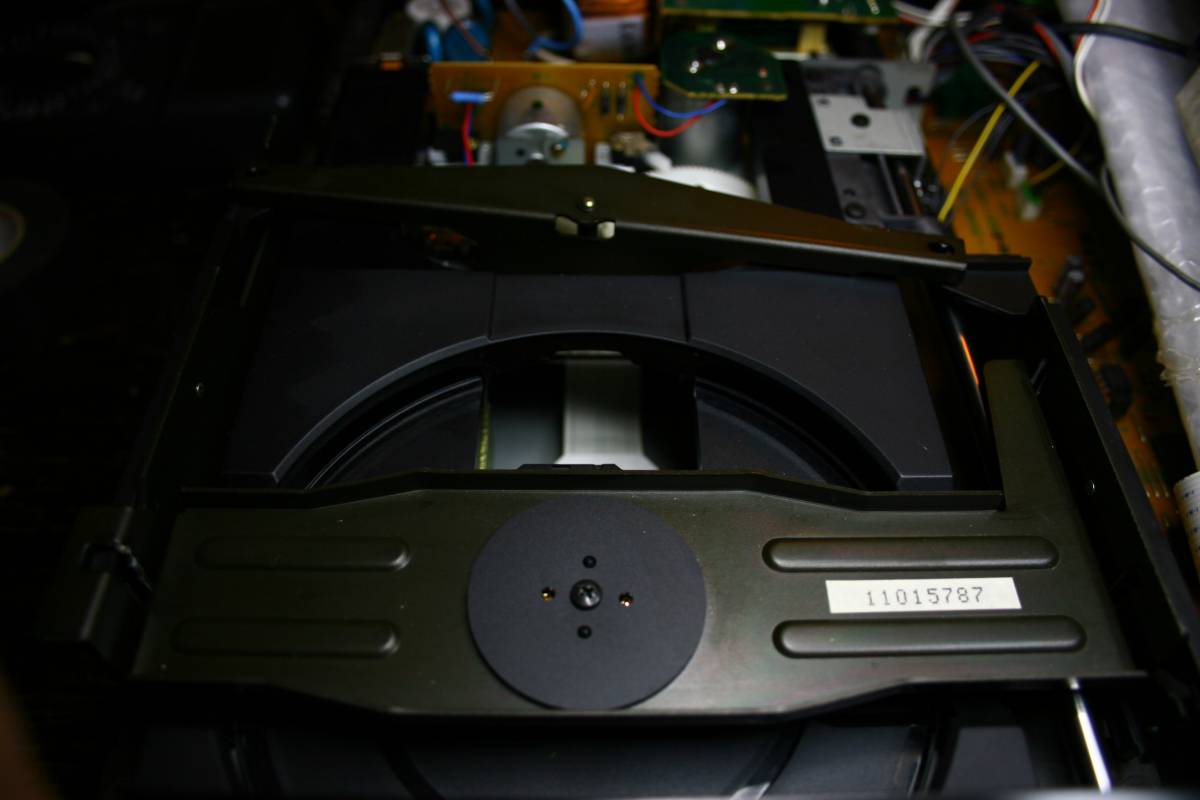
The mechanism is
an adorable wonder machine with all metal
construction, magnetic rail tracking and generally the best mechanism
ever made. I was drooling about it already in the similar Kenwood
DP9010x.
At the moment of
writing - that is my top pick of transport mechanisms.
Only the lasers do tend to fail after circa 20 years.

I found the new
place for the lampizator transformer and you can see
the AC input board with 3 blue MOV transient suppressers and white
choke for RFI filtering.
The MOVs also
play the role of capacitors for RFI.

The silver cans
above are shields over the DAC chips. There are two
PCM58 - one per channel, and each has this can. They also play the role
of heat-sinks.
I never noticed
the heat to be a problem, and I don't detect RFI
problems - but anyhow - Kenwood decided to use cans. I assume it does
not hurt.
But it does not
make lampization easier.
I have left the
cans in place and I performed all work underneath the
PCB.
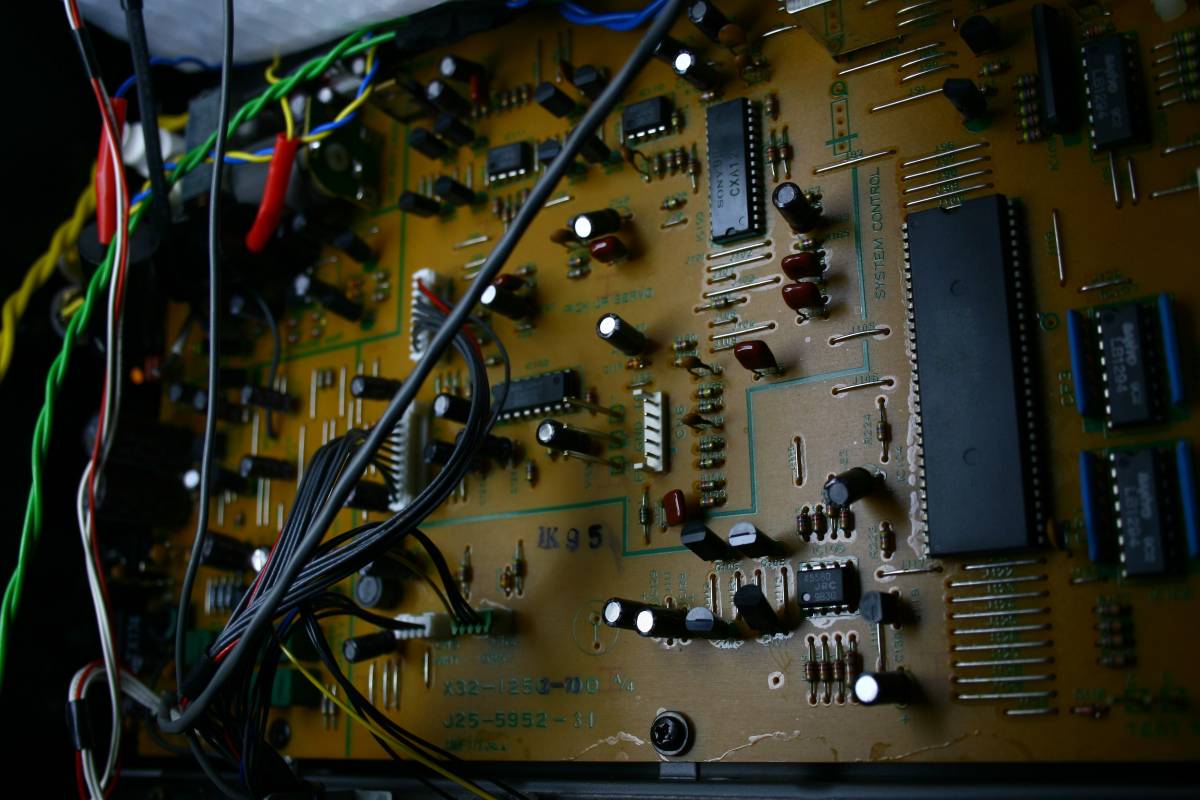
S you can see,
the PCB is very nice. No SMD, all parts in nice order,
each section is clearly described by silk-screen. Part selection is
good
but not exotic. Most digital parts come from Sony.
No philips
influence in sight. Also the mechanism is a direct cousin of
the Sony KSS190A.
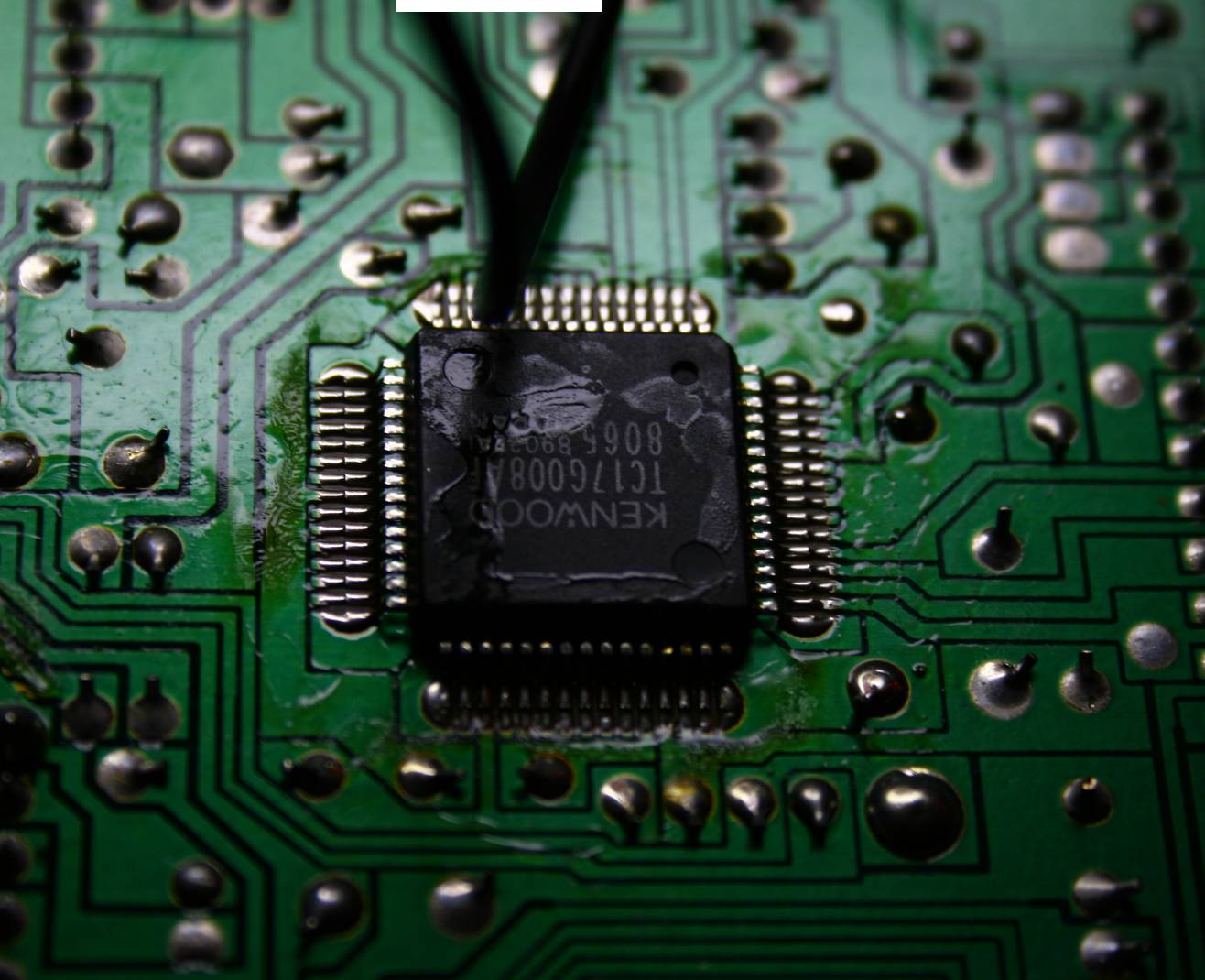
This chip is the
master processor I think. I cant find the datasheet.
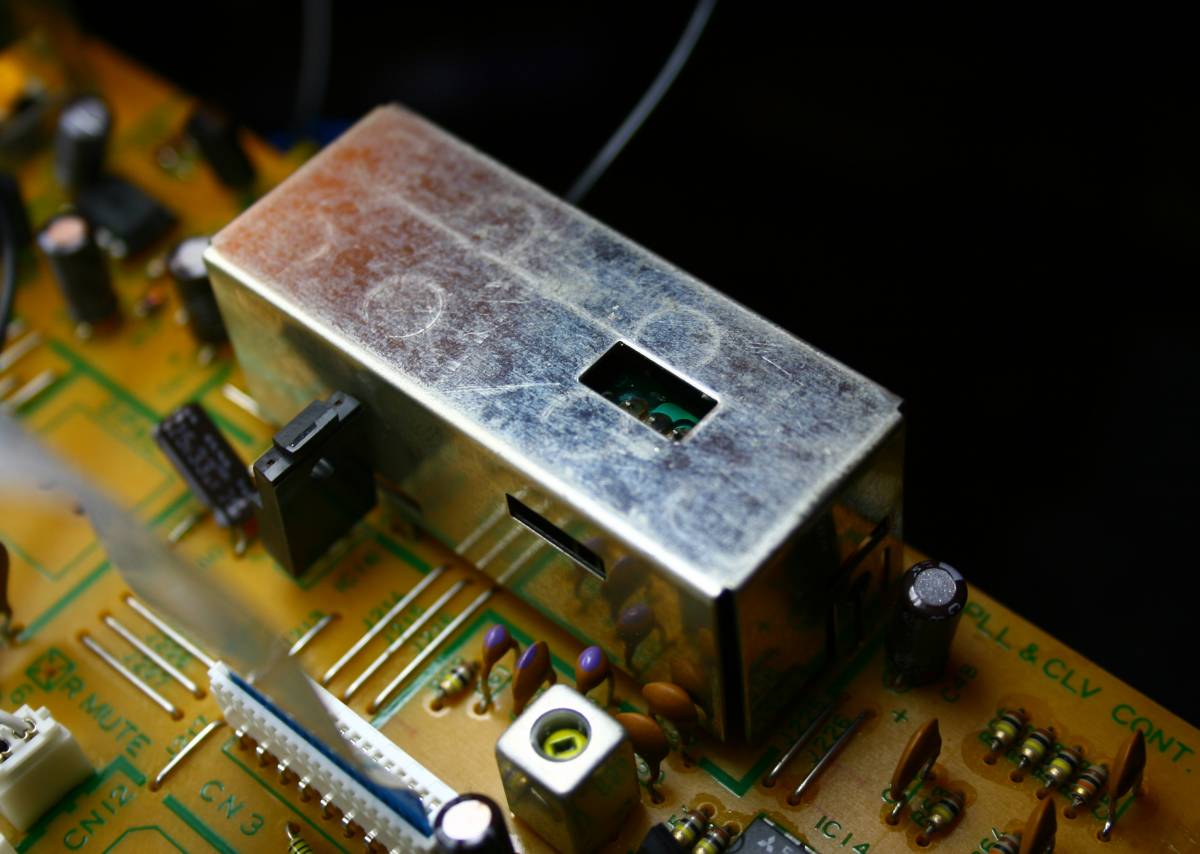
In the third can
there is the clock. It is so well done - I suggest to
LEAVE IT ALONE and do not connect after market clocks.
The crystal
quartz is soft suspended, dampened, screened and generally
well taken care of. It also has own regulator with clean 5V.
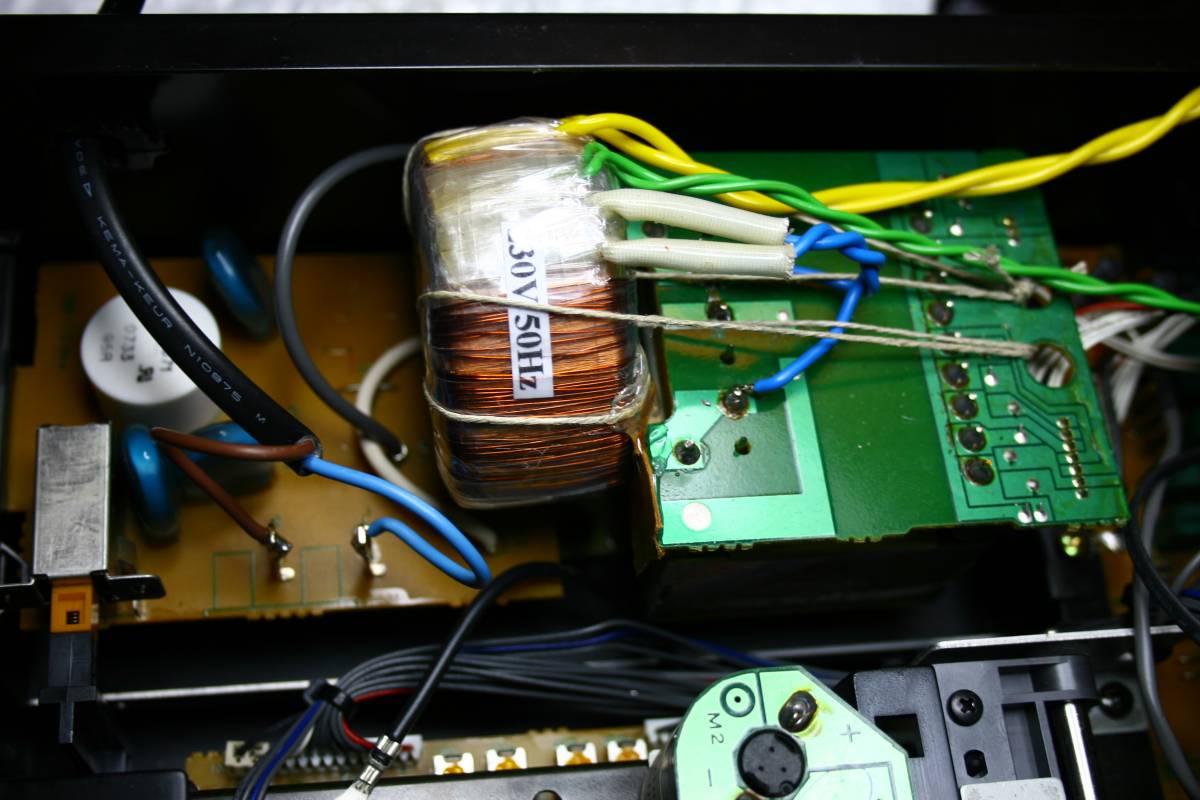
Out of
desperation I mounted the toroid by hot melt glue and secured it
with a cord. I know it is very crude and vulgar.

The power supply
with one huge grey can - a 30 uF/400 VDC paper
in oil capacitor and the whole lampizator circuit fit in the
place where the DAC PCB used to be .
I have moved the
PCB to the centre of the player and i have suspended
it above the digital board.
The lampization
goes like this:
current outputs
of the DAC get floated
I out goes
directly to tube grid.
From tube grid
to ground goes the R Conv = 250 Ohms
Scheme is SRPP,
tube is 6N2P (6H2pi)
Resistors in
cathodes are 150 Ohms.
U supply - 150
VDC from 120 VAC
I tube is circa
0,85 mA.
Output via
capacitors MKT 2,2 uF to RCA sockets.

The SONY digital
demodulator
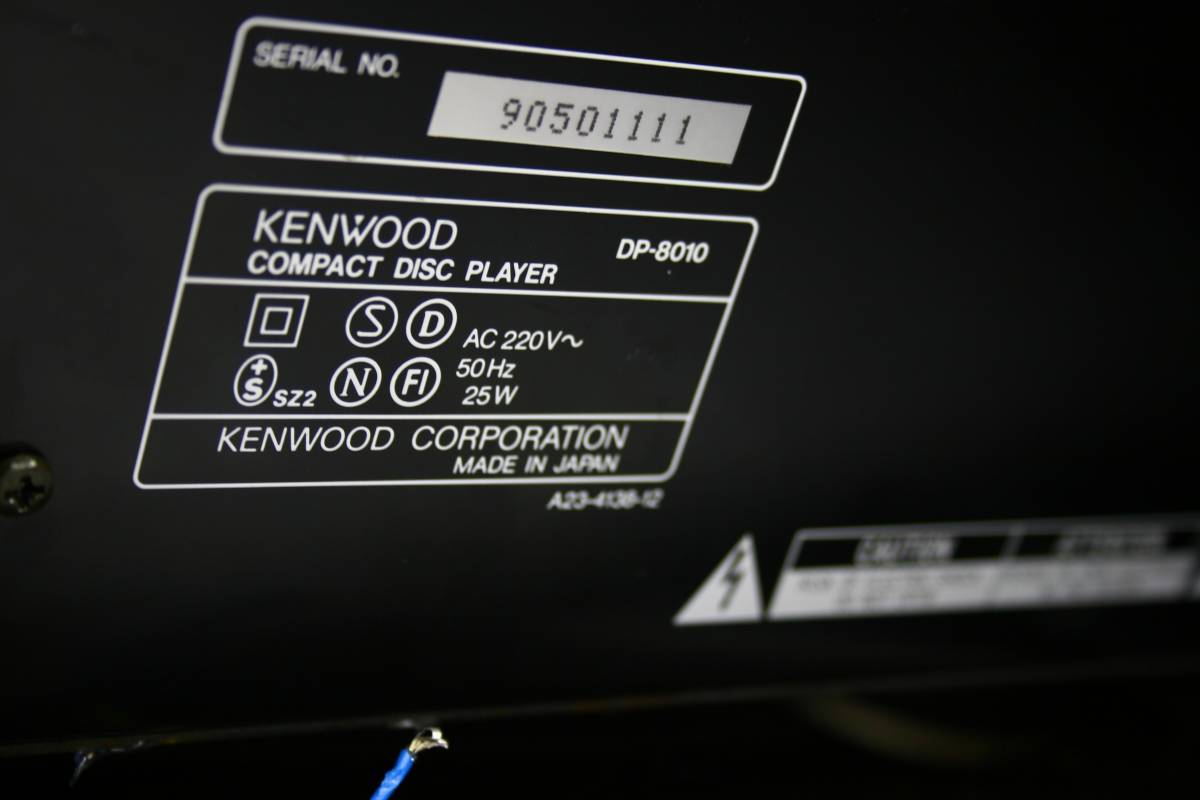


The sound:
This sound is
very neutral. Nothing stands out, nothing offends.
Nothing is missing. It is a nice sound, detailed, musical and accurate.
But I had higher expectations. I hoped the player would keep me up all
night. Unfortunately - it did not.
Don't get me
wrong - it is a great player by any standard, but I heard
more exciting players before.
I will work a
little more, maybe trying different scenarios and parts.
SCHEMATICS of DAC PART













